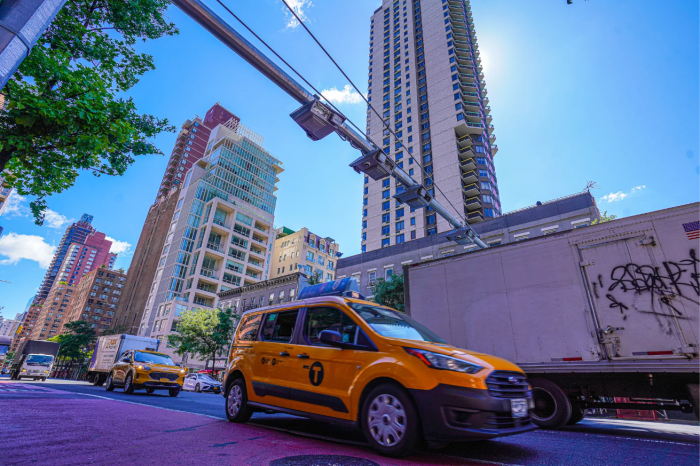
Gov. Andrew Cuomo on Thursday called for the city and state to step up for long-term subway fixes.
He warned at an Association for a Better New York breakfast that both will need to increase their funding toward the MTA for the subway to be modernized to the point where trains run more reliably and more frequently.
Just days after muscling $400 million in funding from the city for a short-term subway improvement plan, the governor and his MTA chairman, Joe Lhota, began setting their sights on the billions needed for long-term improvements aimed at addressing the MTA’s antiquated signal system — improvements to be outlined in the authority’s next five-year capital program for 2020-2024.
“Long-term, we need a full modernization plan. And what’s really happened with the MTA is not just that we have failed on maintenance and deferred maintenance, et cetera, which is always the first thing to go in the budget … and now the chickens are coming home to roost,” Cuomo said at the Cipriani Wall Street event. “But the other phenomenon that has happened is the number of users of the subway system has skyrocketed.”
Cuomo said the only “feasible” option to meet the demand seen in recent years was to increase the frequency of trains through a new signal system. In his speech, he did not mention that the MTA is currently investigating whether it’s utilizing the current signal system to its fullest potential.
“We’re about to work on the next capital plan,” Cuomo said. “I think New York City and the City Council and the state Legislature are being shortsighted if they don’t invest in the MTA’s future. It is the lifeblood of the city. It is how the city moves; it drives the economy. It is cutting your nose to spite your face.”
Lhota, who also spoke at the event, placed the onus for that investment on the city.
“I know people don’t like when I say this, but New York City actually does own the subway system,” Lhota said. “They’ve leased it to us and we operate it. But the reality is there’s a commitment. It’s the law and they own it. And they should be paying their fair share when it comes to the capital program — especially at a period of time when New York City has an $8 billion surplus and the state of New York has a $4 billion deficit.”
The rhetoric could set off another battle over funding the state-run transit authority — similar to the conflict that erupted over funding the MTA’s current $32 billion plan.
“The City of New York committed a record $2.5 billion to the last MTA capital plan, and just last week pledged to help fund a state effort to fix subways the state runs,” said Eric Phillips, a spokesman for Mayor Bill de Blasio, in a statement. “Instead of constantly asking New Yorkers for more money, the state and MTA should learn to do their jobs within their budget and finally seek a sustainable revenue source, so riders aren’t continually victimized by their blame game.”
Based on prior projects, the MTA has estimated that it could take upward of 40 years to replace its subway signal system, which relies on 19th century technology, with a modern equivalent.
The authority has been testing an emerging technology called ultra-wideband radio that could allow it to pinpoint the locations of trains in the system and run them more closely together. The technology is in its proof-of-concept phase, but Cuomo seemed bullish on the prospect that it might cut the modernization process down to eight years.
“We actually have an idea that is exciting … don’t have to wire the subway, you can use transponders on the cars and on the tracks and you can monitor (trains) that way,” Cuomo said. “It would be all wireless. We’re now in the proof-of-concept phase. So far, so good.”
Rich Barone, the vice president for transportation at the Regional Plan Association, said the MTA was the one of the last remaining major subway systems relying primarily on what’s known as a fixed-block signal system. With a fixed-block system, tracks are broken into sections that report whether they’re occupied in order to ensure trains keep a safe distance from each other.
While Barone wasn’t yet sold on ultra-wideband radio, he said it was “important” that the authority was open to new technologies.
Barone stressed that the MTA can’t yet give up on a more established system known as communications-based train control, which tracks precise locations of trains so that each train could be run closer together — meaning more trains and shorter wait times at stations.
“We have to be looking at parallel tracks,” Barone said. “We need to start making this change now.”




































